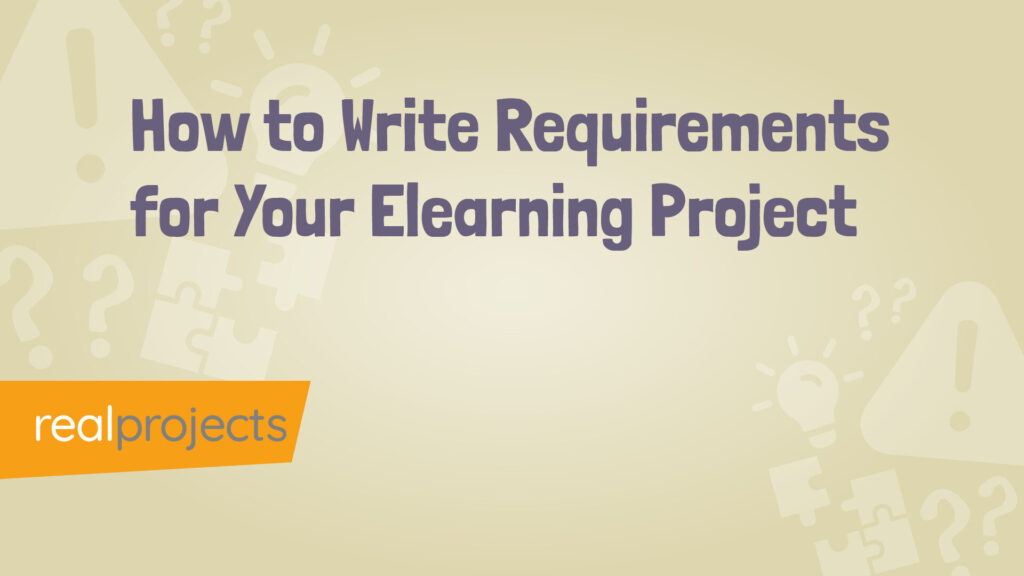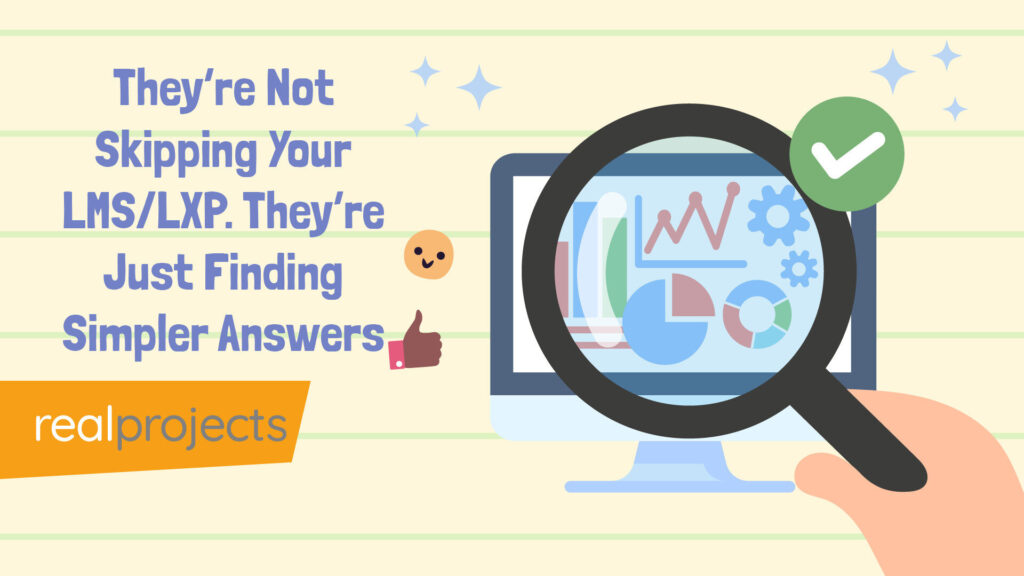What Do Elearning Companies Actually Do?
Elearning is a large and growing global industry, employing animators, writers, programmers, designers, project managers, and more.
Despite its scale, it rarely features in mainstream tech coverage. During the Covid-19 pandemic, online learning received a major boost as schools and organisations rapidly adopted digital training. The challenge was not just creating content, but understanding how to deploy it effectively and ensure it supported learning.
Recent Market Data
- The global elearning market was valued at $399.3 billion in 2022 and is projected to grow at a 14% CAGR between 2023 and 2032 (precedenceresearch.com, gminsights.com, snsinsider.com).
- By 2025, 98% of corporations are expected to implement elearning for employee training (continu.com).
- The LMS market was valued at $24.05 billion in 2024 and is projected to grow at a 19.9% CAGR from 2025 to 2030 (proprofstraining.com).
- In 2025, 30% of L&D teams report using AI-powered tools in their learning programs, with 91% planning to increase AI usage in 2024 (continu.com).
The Different Types of Elearning Companies
The elearning sector includes a broad range of companies involved in hardware, software, platforms, consultancy, and services.
It is deeply integrated with HR and L&D functions, and the market continues to grow. According to Global Market Insights Inc., the global elearning market is projected to reach $1 trillion by 2028.
Elearning companies range from small niche providers to large multinationals.
Big tech firms like Microsoft and Adobe operate in the sector delivered development tools like Creative Cloud, widely used by development teams. Adobe Captivate has been used by elearning development teams for years and is the main competitor to Articulate 360.
Microsoft Teams is now a major platform in higher education, and is embedded in coprorate environments – not only for meetings but for delivering training. This variety of software, platforms and use cases can make it difficult to know where to start when selecting a supplier.
One option is to visit elearning exhibitions and conferences, which can provide a helpful overview of the landscape. Sites like Learning Light, Training Industry and Elearning Industry also publish regular news and insight articles that help buyers keep track of new trends and providers. Exhibitions like Festival of Work, Learning Technologies and Training Conference are just a few that you can visit. If you are planning to visit an exhibition then it makes to sense to seek out a list of L&D exchibition and conference events.
Platform Providers vs Content Creators
Some elearning companies specialise in platforms. These include Learning Management Systems (LMS), Virtual Learning Environments (VLEs), or Learning Experience Platforms (LXPs). These systems allow organisations to host, deliver, and track learning content.
Others focus on content creation. Some build custom courses, while others offer ready-made libraries that are either sold directly or supplied to platform providers. Content libraries are a quick way to deliver training at scale and often cover areas like wellbeing, information security, leadership, and compliance.
These providers typically use tools like Articulate Storyline 360 and employ dedicated teams to create and update their course libraries. Organisations can subscribe to an entire content library and have it up and running across their teams within days.
Software Tools and Development Services
There are also companies that offer elearning tools and development platforms. For example, Articulate provides Articulate 360, a suite of tools built specifically for creating interactive elearning content. Adobe Captivate offers similar functionality, with both tools supporting SCORM and xAPI standards.
Some content platforms act as marketplaces. Providers like OpenSesame and Go1 allow companies to browse and license courses from multiple vendors. This model, similar to streaming services, gives organisations access to thousands of courses with minimal effort.
How the Elearning Market Is Evolving
It’s increasingly difficult to draw firm boundaries around what constitutes an “elearning company”. The sector now includes platform vendors, content creators, software providers, and hybrid companies that offer a bit of everything. Over the last few years elearning companies have included AI in their technology stack and the sector has also seen AI companies enter the sector!
Organisations often rely on a combination of platforms and content to meet their training needs. Many still use tools like Articulate and Adobe to create content in-house. Others choose to license content from providers like OpenSesame or LinkedIn Learning, where new material is added regularly.
Some content developers supply directly to LMS and LXP platforms. Others license their content to marketplaces, extending their reach without maintaining a direct sales channel. This approach supports LMS providers looking to bundle content with their platforms as an added benefit.
Increasingly, large LMS vendors are acquiring or partnering with content providers. This helps them offer more complete solutions, delivering both the platform and the content customers need. Content creation is costly and time-consuming, so partnerships can help maintain quality and ensure content is updated regularly.
Meanwhile, platforms are becoming more sophisticated. Many now incorporate artificial intelligence (AI), diagnostics, or integrations with broader HR systems. LMSLXP platforms are no longer standalone tools, they’re part of the wider digital infrastructure. With the LMS/LXP now being part of the a wider HR or People Management System that looks include payroll, onboarding, training and more.
At the smaller end of the market, simpler platforms still serve SMEs with limited user numbers and budgets. A well-scoped procurement process can help these businesses find affordable, functional LMS solutions tailored to their size and needs. Companies are still looking for platforms that will deliver the basic functionality well and those companies are available.
In short, elearning companies now span the full range of service models: from full-service multinationals to highly specialised boutique firms. The breadth of choice is larger than ever.
What to Consider When Choosing an Elearning Company
Define Your Requirements First
The first step in selecting a supplier is clarifying your organisation’s needs. Start by identifying your project objectives. Are you looking for custom development, an off-the-shelf content library, a platform, or a combination?
If you’re preparing to go to market, invest time in drafting a project specification. This should clearly outline your requirements, timelines, and any technical or accessibility constraints. A clear brief will help potential suppliers assess fit and provide accurate proposals.
Compare Quotes and Project Fit
When you share your specification with suppliers, be aware that responses will vary depending on company size and scope. Large vendors may include additional services, while smaller providers may offer a leaner, more cost-effective approach.
Try to get a sense of market rates and day rates for similar projects. If you’re not sure what to expect, reach out for a preliminary conversation before submitting your brief. A good supplier will help clarify what’s realistic and guide you through the process.
The goal is to find a partner who not only understands your needs, but can also deliver effectively, whether that means supplying ready-made content, building custom training, or supporting your team with tools and guidance.
The largest surprise that people get is when they receive widely different prices from suppliers. The reason for this is often due to badly put together specification, especially if this is for a custom project. The more detail, specification and numbers you can include the more accurate the costs you can get.
FAQs
What is an elearning company?
An elearning company creates digital training content or platforms. They help organisations teach people online, using videos, quizzes, courses or virtual classrooms. Some focus on content libraries, others on tools like LMSs.
What is an example of elearning?
A short online course that teaches managers how to give feedback is an example of elearning. It might include a video, interactive questions and a quiz at the end, all delivered on a computer or phone.
What are the best elearning companies?
Top elearning companies include Real Projects, OpenSesame, Go1 and LinkedIn Learning. Some specialise in ready-made content, others in platforms or custom training. The best choice depends on your needs like content style, languages or platform fit.
What is elearning and how does it work?
Elearning is digital learning delivered online. It works by giving people access to training anytime and anywhere, usually through an LMS. Content is structured into lessons or courses with videos, activities and quizzes to track progress.



